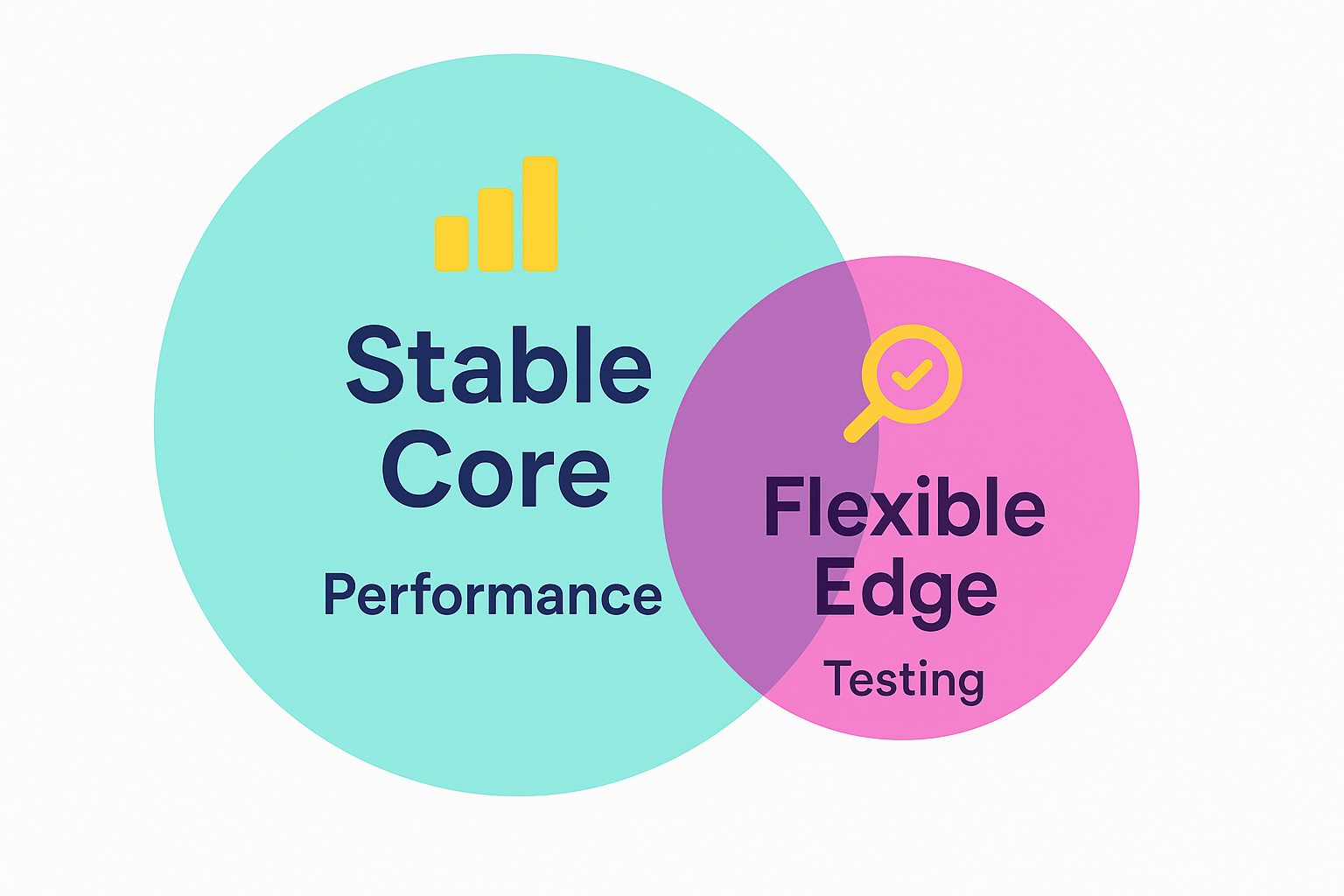When you’re managing Facebook or Meta ad campaigns, the urge to adjust your budget mid-flight can be strong. But that next budget change? It might do more harm than good if you’re not careful.
Scaling spend too fast, too often, or without a real system can knock campaigns off track, trigger the learning phase again, and kill the consistency that Meta’s algorithm depends on.
If you’ve ever asked, "Why did my ads stop delivering after a budget increase?" or "Why did performance tank after I doubled spend?" — this guide is for you.
Let’s break down how to make smarter, calmer spend adjustments while protecting performance.
Why Meta Penalizes Sudden Budget Changes
Meta’s delivery system thrives on consistency. Each campaign builds up historical data, which the algorithm uses to optimize future delivery. When you spike or slash budget too aggressively, Meta often re-triggers the learning phase — even if your audience and creative stay the same.
This means:
-
Higher CPMs — Cost per thousand impressions can jump, as Meta tries to recalibrate delivery with limited context.
-
Delivery volatility — Impressions may become uneven or slow down.
-
Reset learning phase — The algorithm starts collecting new data, erasing much of your prior optimization.
-
Performance dips (often for 3–5 days) — Campaigns typically underperform during this recalibration.
To avoid this, every budget change should be:
-
Planned — Avoid adjusting based on emotional responses to one-off drops in ROAS or CTR.
-
Controlled — Use gradual percentage increases or decreases, not large leaps.
-
Tied to performance thresholds — Anchor decisions to actual results, not assumptions.
If you're stuck in "Learning Limited" after tweaking spend, this article on why you see 'Ad Set May Get Zero' and how to fix it explains what's happening under the hood.
1. Use Rule-Based Scaling (Not Guesswork)
One of the most common mistakes advertisers make is adjusting budget based on "feel" rather than data. Instead, implement rule-based automation or at least manual criteria.
| Condition Type | Trigger Criteria | Recommended Action |
|---|---|---|
| Scale Up | ROAS > 30% above target for 3+ days | Increase budget by 15–20% |
| Scale Down | ROAS > 40% below target for 3+ days | Decrease budget by 10–20% |
| Watch Performance | CTR steady but ROAS dropping | Check audience fatigue |
For Scaling Up:
-
ROAS is 30%+ above target for at least 3 consecutive days — This helps ensure you're not reacting to a single lucky day.
-
CPA is 20% below your threshold and holding steady — Your cost per result is efficient, indicating room to grow without losing profit.
-
Frequency is under 2.5 — Your audience isn’t seeing the ad too often, reducing the risk of burnout.
For Scaling Down:
-
ROAS drops 40%+ below target for 3 days or more — A sustained dip shows the campaign needs intervention.
-
Audience fatigue signs show up — High frequency (above 3), declining CTR, and rising CPMs suggest people are tuning out.
-
You're approaching caps in small retargeting pools — Retargeting audiences can only handle so much spend. Overspending leads to diminishing returns.
And always scale by increments — not leaps. A good rule of thumb: never increase budget more than 20% in a 24-hour window.
Need help figuring out whether CBO or ABO works best for your setup? Here’s a breakdown of daily budgets vs. campaign budget optimization.
2. Separate Core and Experimental Spend
A reliable approach is to structure your account using what we call the "Stable Core, Flexible Edge" model.

-
Stable Core — These are your proven, high-performing campaigns that consistently deliver your target ROAS or better. They should be protected from frequent changes and run with consistent budgets to maximize algorithm stability.
-
Flexible Edge — These are your testing campaigns. You're trialing new creatives, audiences, or placements here. Since the performance is more volatile, you're free to scale up or down aggressively without putting your entire account at risk.
This system gives you room to test and adapt — without jeopardizing stable ROAS.
And if your creative is underperforming despite stable delivery, check out this guide on why your Facebook ads aren’t converting.
3. Match Budget to Funnel Stage
Spend behaves differently at each funnel level. You can’t scale top-of-funnel (TOF) the same way as bottom-of-funnel (BOF).
TOF:
-
Broader audiences — You’re reaching people who may not know your brand. You need more impressions and budget to collect meaningful data.
-
Lower intent — Performance is typically weaker here, but you gain reach and awareness.
-
Higher volume + volatility — Results swing more, so avoid judging TOF campaigns too quickly.
BOF:
-
Narrow, high-intent audiences — Think of website visitors, cart abandoners, or email subscribers.
-
Sensitive to frequency and burnout — These users see your ads more often, so small audiences tire quickly.
-
Should be capped carefully — Overspending at BOF drains your warm audiences and kills efficiency.
So, before you scale anything, ask: Where in the funnel does this sit? You might find that holding TOF steady while adjusting BOF manually gives better balance.
For more insight, check out our Facebook Ads Funnel Strategy: From Audience Identification to Conversion.
4. Use Automation (But Keep It in Check)
Meta's automated rules, including Advantage+ and cost cap bidding, can streamline spend control — if you configure them right. But automation isn’t a substitute for good judgment.
Suggested safeguards:
-
Create automated rules to pause campaigns — For example, if CPA exceeds your goal by 40%, auto-pause the ad set or campaign.
-
Set alerts for frequency spikes — If frequency exceeds 3.5, you might be oversaturating your audience. This often precedes a drop in performance.
-
Cap daily budget growth — Prevent auto-rules or Advantage+ from increasing spend too quickly by setting daily growth limits.
Want a deeper look at how Advantage+ changes budget control? Here’s a post on how to improve campaign performance with Meta Advantage+.
5. Budget Adjustments: Avoid These Costly Mistakes
Let’s name the repeat offenders:
-
Scaling too fast — Sudden jumps in budget can throw off delivery and trigger relearning. Stay within a 10–20% change per day, unless you're restarting a paused campaign.
-
Editing budget and creative at once — If ROAS drops after changing both, you won’t know which change caused it. Isolate variables.
-
Changing budgets mid-day — The algorithm needs a full day to adjust. Change budgets early in the day to allow a full delivery cycle.
-
Testing on weekends — Weekend behavior tends to be less predictable and often doesn’t reflect weekday performance. Avoid major budget changes late Friday through Sunday.
-
Not checking overlap — Launching multiple campaigns targeting the same audience? You might be bidding against yourself. Use exclusions and audience segmentation.
Always check audience overlap and how it impacts performance before launching or scaling new ad sets.
6. Monitor the Right Metrics Before You Touch Budget
Don’t panic after one off day. Look for patterns.
Metrics to watch:
-
ROAS trend over 3–5 days — Consistent dips over multiple days indicate a real issue. One-day spikes or drops don’t justify action.
-
CTR and CPM — If CTR drops and CPM rises, your ad may be fatiguing. If CTR stays strong and CPM is low, you’re still in a good spot.
-
Frequency and impression share — High frequency with no new conversions? You’re likely overspending on the same users. Check audience freshness.
If performance is flat but metrics are still strong, hold budget. If all three metrics are slipping together — it may be time to adjust.
Also, here’s a helpful read on how to finish the Facebook learning phase quickly so your adjustments stick faster.
Final Thoughts: Stability Over Spikes
Ad budgets shouldn’t swing like a pendulum. Smart advertisers scale with patience, structure, and clear thresholds.
A quick recap:
-
Build rules and thresholds into your scaling process — Use data, not gut instinct, to trigger changes.
-
Use automation, but don’t blindly rely on it — Keep your hand on the wheel.
-
Let your best campaigns run undisturbed — Your winners don’t need daily adjustments.
-
Always tie spend to funnel intent — not just to ROAS — TOF and BOF should never be treated the same.
Your budget is not just a lever — it’s a signal to Meta’s system. Treat it with care.

